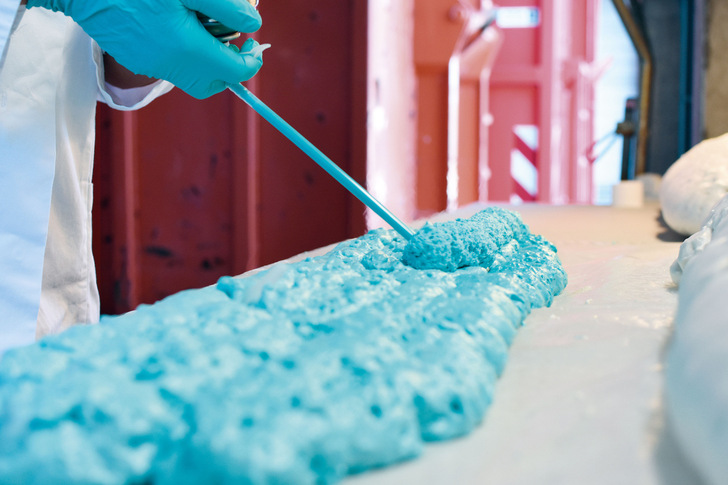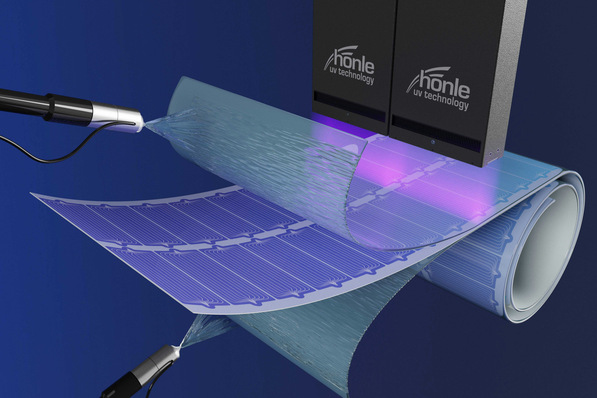The possible causes of classic application errors such as insufficiently expanding foam have been compiled here. "Every handyman and do-it-yourselfer will find an initial analysis tool here if they have problems during processing," explains Antje Ebner of the PU Foam Info Centre. Also new are the tips on typical uses of PU foam in construction and renovation.
In the FAQs on the PU Foam homepage, more than 50 frequently asked questions are answered in detail - clearly arranged by seven subject areas.
Here are the fatal mistakes when using construction foam:
1. Too little or no foam comes out of the PU foam can?
If it is 1-component PU foam, check whether you have shaken the can enough (approx. 20 - 30 times). Read the package instructions to see how much shaking is necessary.
2-component PU foam may not have been shaken enough and / or the hardener (activation dial at the bottom of the can) may not have been activated properly or at all. It is typical here that the hardener was turned in the wrong direction or not far enough. How exactly the hardener is activated varies from manufacturer to manufacturer. The package instructions provide more detailed information.
The opening ball in the gun is stuck and the valve cannot open because of this. This happens if the gun was only cursorily cleaned with acetone after the last use. In this case, you can try to loosen the opening ball of the PU foam gun carefully with a toothpick. Under no circumstances, however, should you work on the can valve with tools.
[What to consider when installing wood windows in winter]
The can valve itself is stuck, for example because the PU foam can was stored incorrectly. In this case, you must use a new can! You should never try to open a construction foam can by force. Doing so can easily damage the can so that its contents come out abruptly. In the more cost-effective case, this means irreparable contamination, in the worst case, injury to you.
A PU foam can can also be too cold! The colder it is, the more viscous the PU prepolymer in the can becomes and it cannot escape as easily. It is best to protect your cans from the weather. If it has already become too cold, you can also heat it slowly in a water bath. But please be careful! If a can is heated too quickly and too strongly, the gas in the can expands too quickly - this can lead to explosions! Immersion heaters, Bunsen burners or even a hot heater are taboo when handling pressurised gas cans!
The can used is too old. You can easily tell whether a construction foam can is overlaid by shaking it. If the contents are liquid, the foam is OK. If it feels tough when you shake it, the can is too old.
2. The PU foam does not adhere to the substrate or the flank bonding is defective?
With 1-component PU foam, insufficient shaking of the can is probably the cause of the fault. The packaging instructions provide further information.
[What do IG manufacturers want from warm edge systems?]
With 2-component PU foam, the hardener may not have been activated properly or at all. Typically, the hardener activation dial was turned in the wrong direction or not far enough. How exactly the hardener is activated varies from manufacturer to manufacturer. The package instructions provide more detailed information.
3. The foam is brittle and fragile, and it takes a long time to cure?
Is the outside temperature below 5 degrees Celsius? Then it is too cold for normal PU foam. In this case, you can use special winter foam. This usually works down to minus 10 degrees Celsius.
4. The applied PU foam loses its stability and liquefies?
Either the PU foam can is too warm or the outside temperature or both. As a rule, PU foam works up to temperatures of around 35 degrees Celsius. You will find more precise instructions for the foam used on the packaging. If only the can is too warm, you can bring it to operating temperature in a cool water bath. If it is generally too hot, you should switch to cooler times of the day.
5. The foam does not harden properly, although everything looked good when foaming?
Possibility 1: Was the foam cut too early? A sure sign is that the knife sticks when cutting. This disturbs the curing process and the liquid foam collapses, i.e. it collapses. If this is the case, the joint may need to be re-foamed. The curing times of the PU foam used can be found in the package instructions.
Possibility 2: The 1-component PU foam had too little moisture to react. This happens especially often when filling pipes or doorsteps, because there is only very limited humidity available in the confined space. Either you use 2-component PU foam right away, because it does not need moisture to cure, or you moisten the individual layers with water while foaming.
6. The foam shrinks and does not adhere properly?
In this case, too much moisture may be the cause. Too much water also damages the foam! As a rule, light moistening with an atomiser is sufficient. Here, too, the package instructions provide information on the correct amount.
[New insulating bar made of recycled polyamide foam]
7. The PU foam is still expanding after weeks?
This is a result of the 1-component foam not finding enough moisture for the curing process and the core therefore not being able to cure properly. If the humidity rises later, the chemical reaction starts up again and the foam pushes back.
8. After a few weeks the foam surface becomes brittle and discoloured?
PU foams are resistant to rotting and decay, but not to light. Depending on the intensity of the irradiation, they discolour and become brittle and fragile on the surface. Therefore, they should be covered with a protective coating, plaster or other suitable material as soon as possible after complete curing and protected from the sun.
These tips were compiled by Daniel Mund, editor-in-chief GLASWELT magazine













